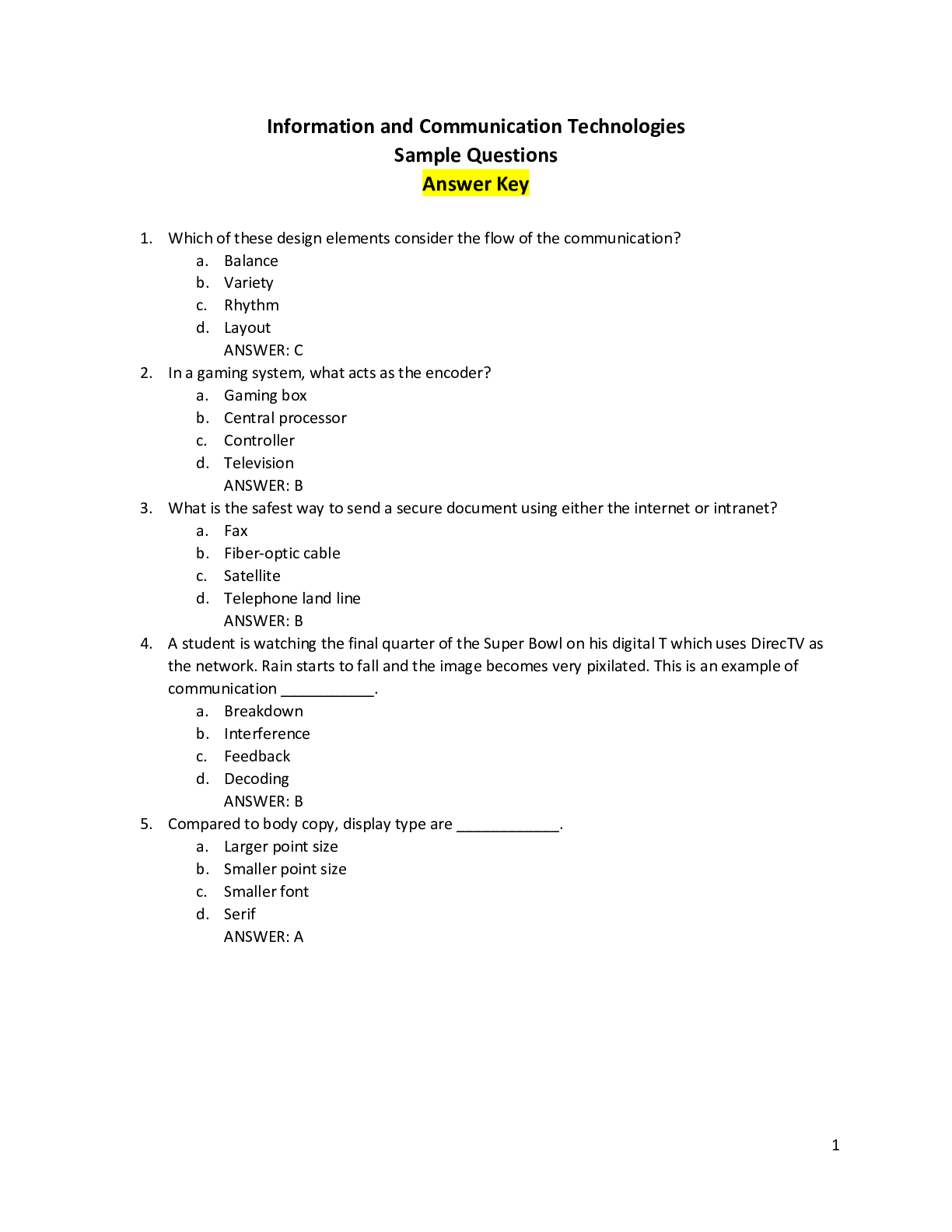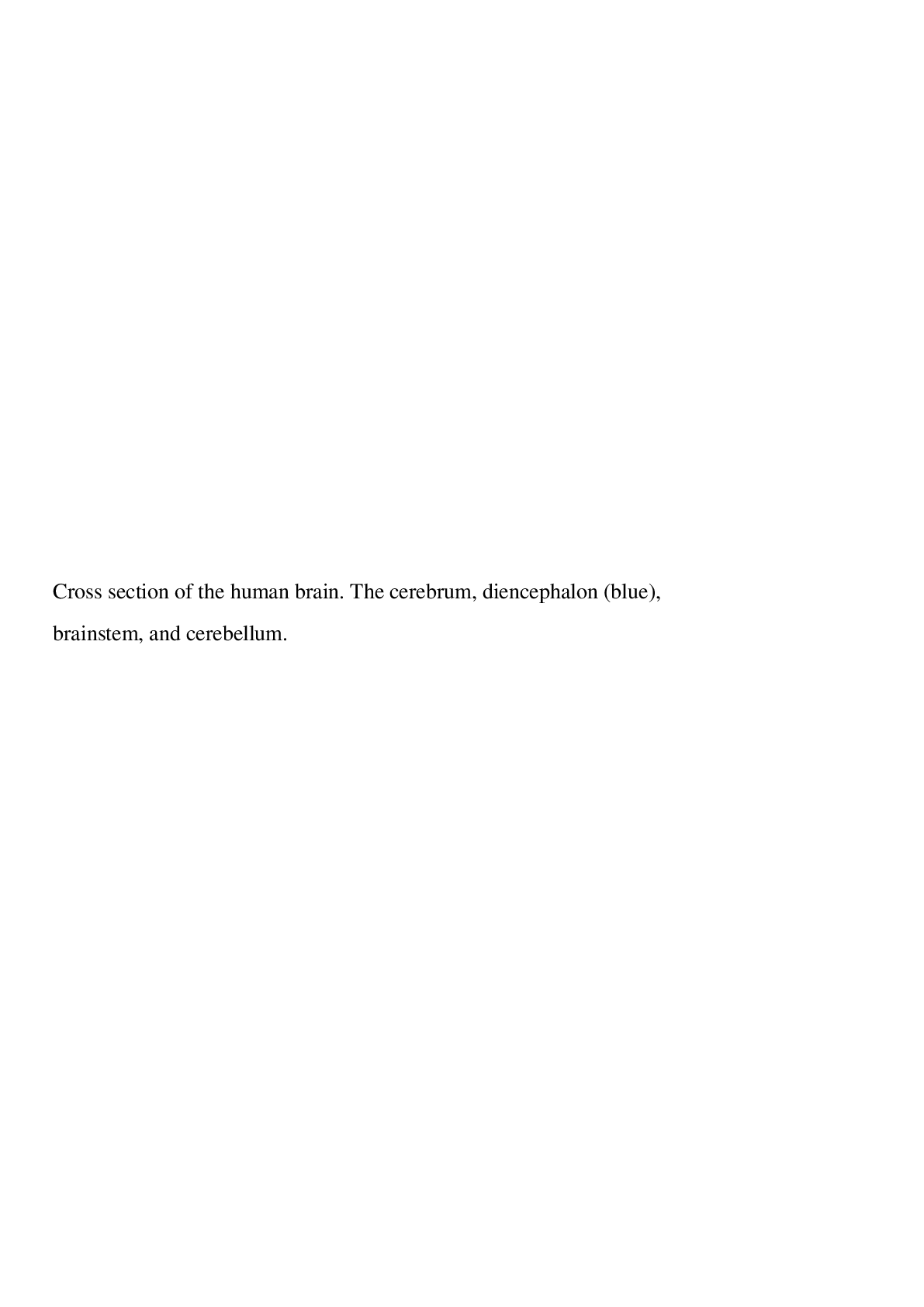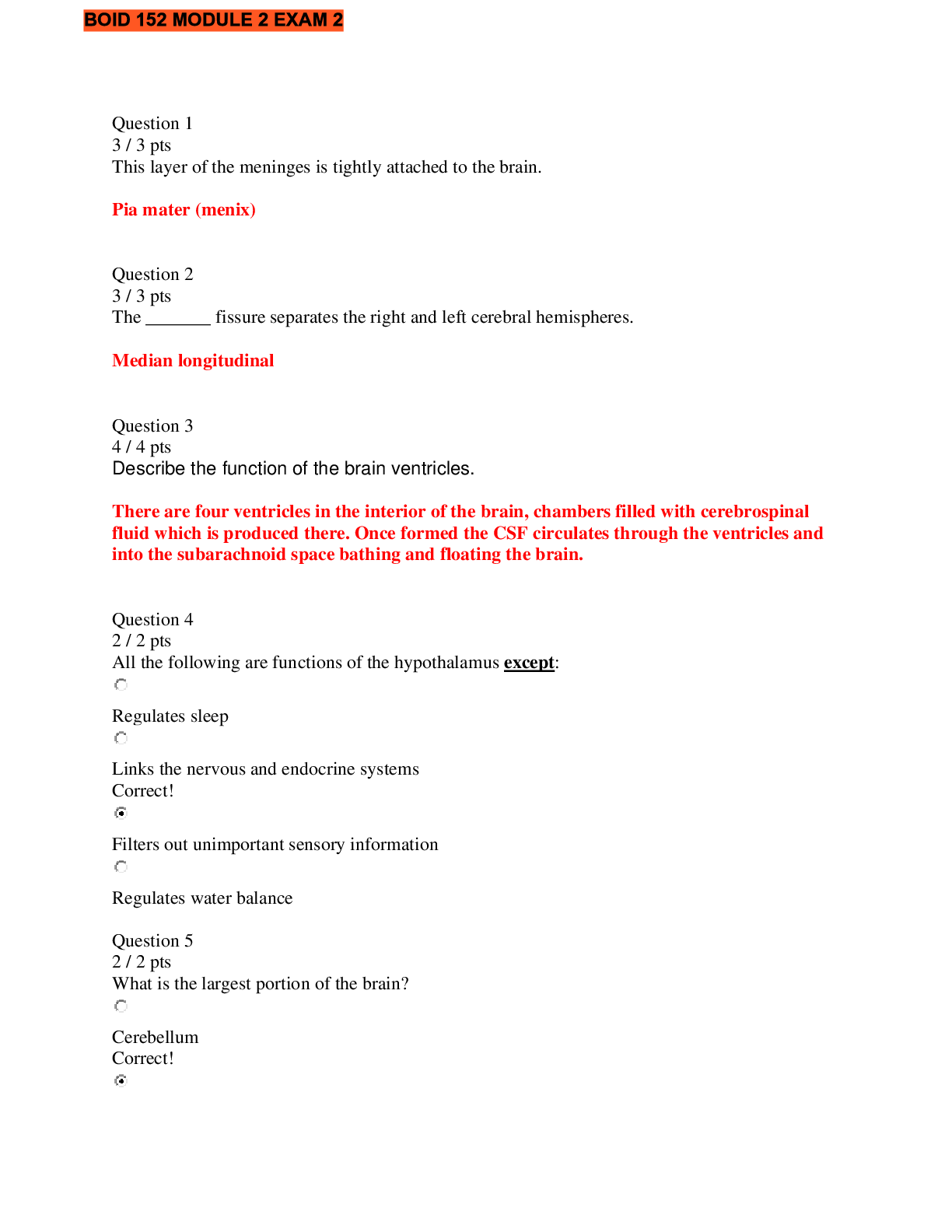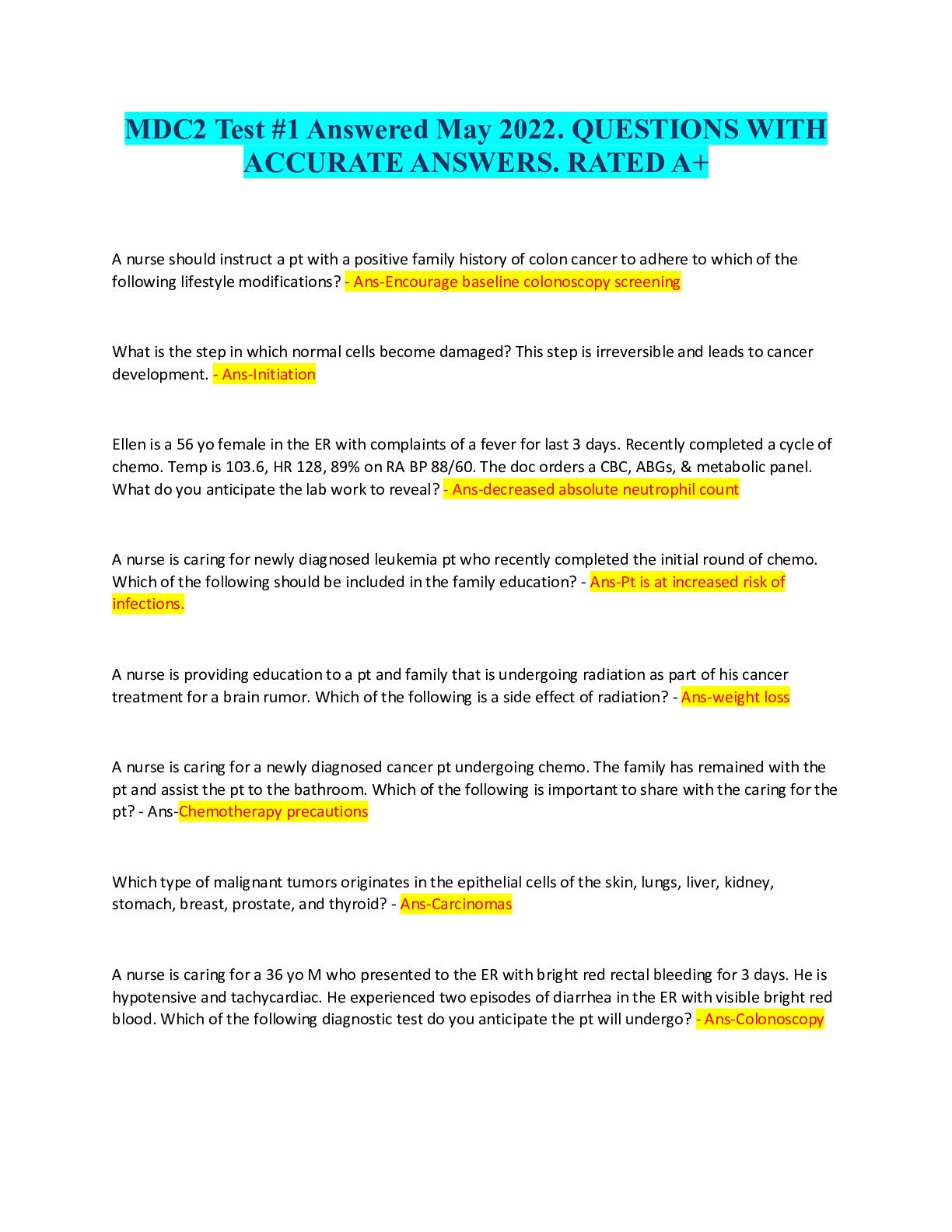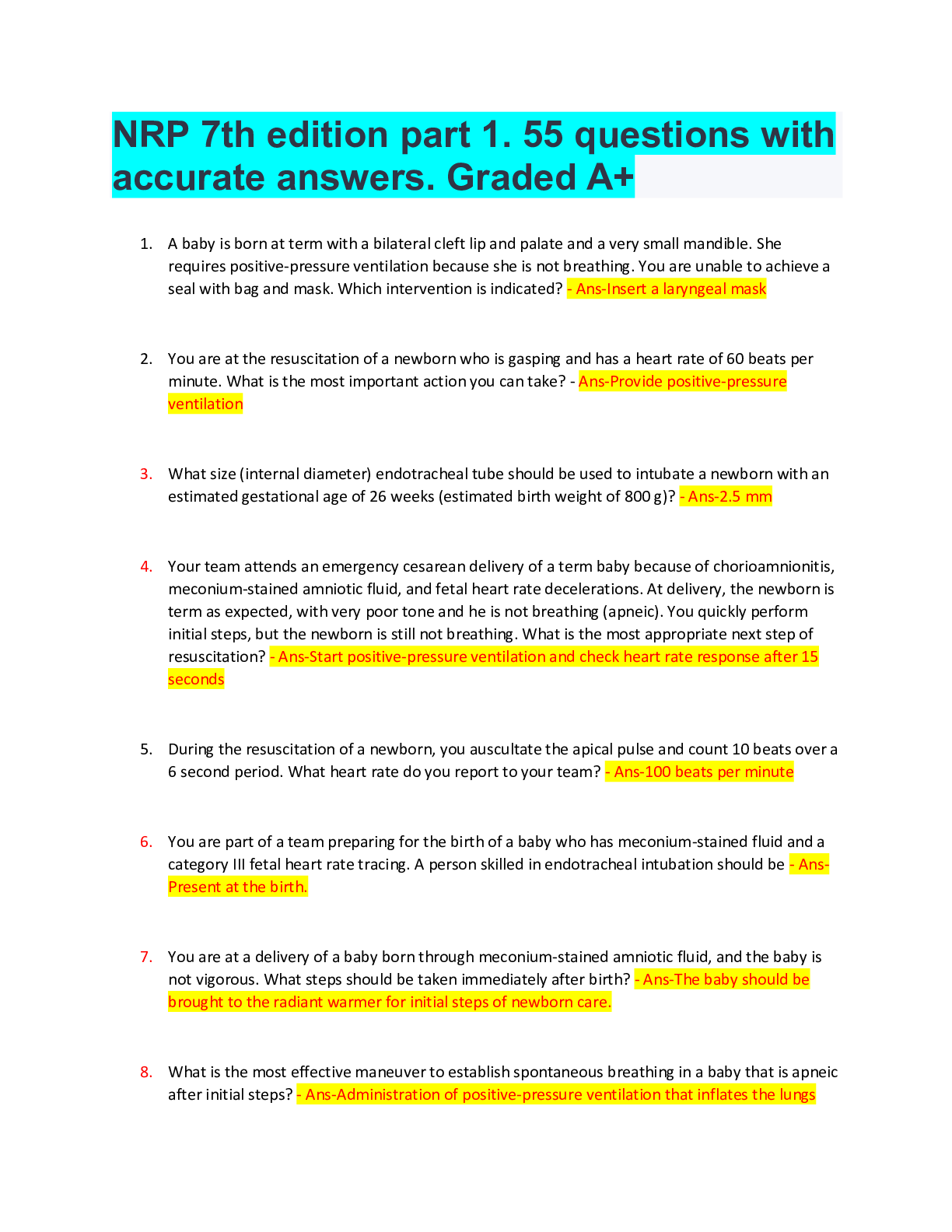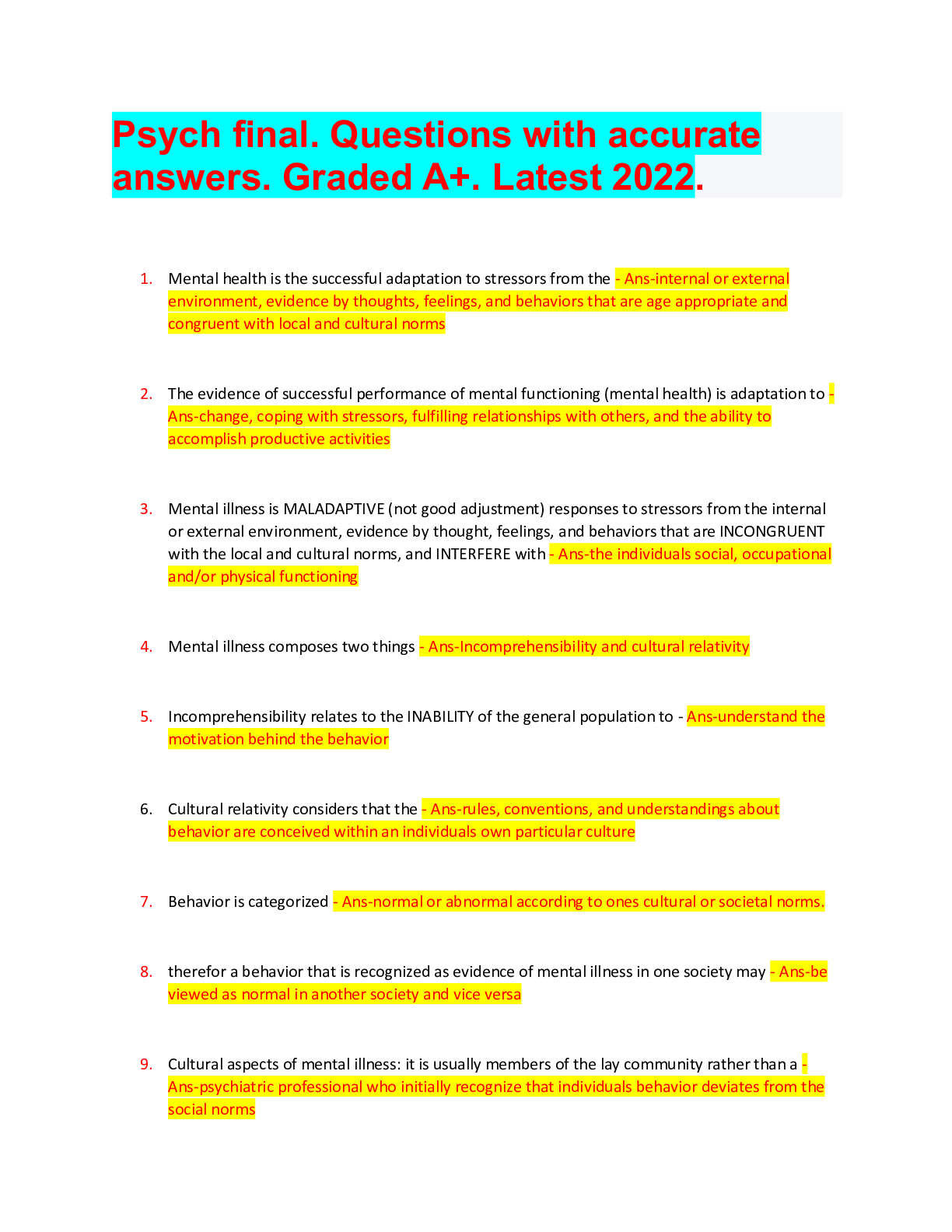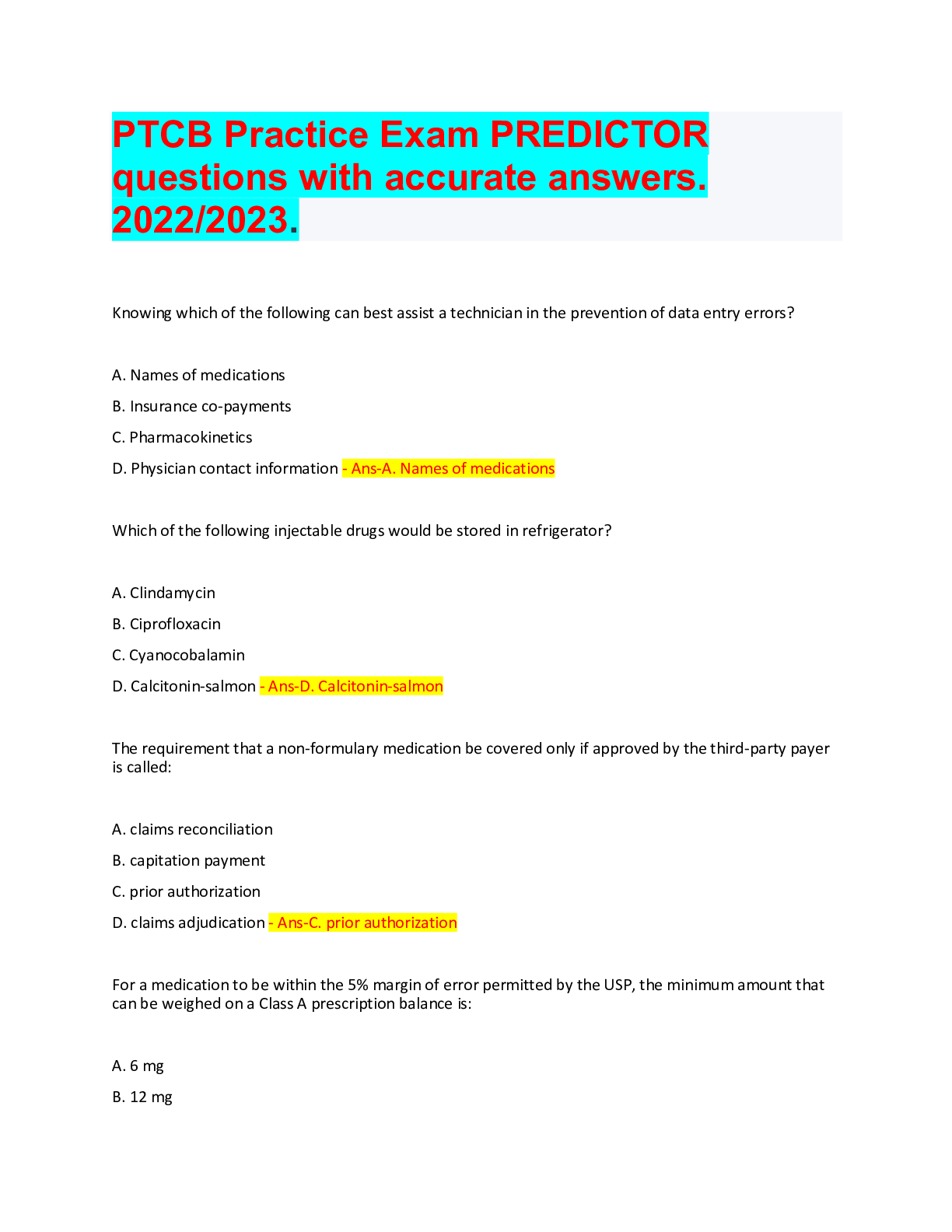*NURSING > QUESTIONS & ANSWERS > AAFP questions 120, All questions with accurate answers. Graded A+ (All)
AAFP questions 120, All questions with accurate answers. Graded A+
Document Content and Description Below
AAFP questions 120, All questions with accurate answers. Graded A+ A 52-year-old male presents with moderate symptoms of prostatism. A prostate examination is normal. His post-void residual vol... ume is 90 mL. His PSA level is 0.75 ng/mL (N 0.0-4.0). He says his nocturia has become troublesome and you decide to initiate therapy.This patient does NOT meet the criteria for use of which one of the following? (check one) A. Doxazosin (Cardura) B. Finasteride (Proscar) C. Tadalafil (Cialis) D. Tamsulosin (Flomax) E. Silodosin (Rapaflo) - ✔✔B Pharmacologic options for benign prostatic hyperplasia and lower urinary tract symptoms include an α-adrenergic blocker, a 5-α-reductase inhibitor (if there is evidence of prostatic enlargement or a PSA level >1.5 ng/mL), a phosphodiesterase-5 inhibitor, or antimuscarinic therapy. The first three have proven efficacy as monotherapies. A 35-year-old female comes to your office for evaluation of a tremor. During the interview you note jerking movements first in one hand and then the other, but when the patient is distracted the symptom resolves. Aside from the intermittent tremor the neurologic examination is unremarkable. She does not drink caffeinated beverages and takes no medications.Which one of the following is the most likely diagnosis? (check one) A. Parkinson's disease B. Cerebellar tremor C. Essential tremor D. Physiologic tremor E. Psychogenic tremor - ✔✔E Psychogenic tremor is characterized by an abrupt onset, spontaneous remission, changing characteristics,and extinction with distraction. Cerebellar tremor is an intention tremor with ipsilateral involvement onthe side of the lesion. Neurologic testing will reveal past-pointing on finger-to-nose testing. CT or MRIof the head is the diagnostic test of choice. Parkinsonian tremor is noted at rest, is asymmetric, anddecreases with voluntary movement. Bradykinesia, rigidity, and postural instability are generally noted.For atypical presentations a single-photon emission CT or positron emission tomography may help withthe diagnosis. One of the treatment options is carbidopa/levodopa.Patients who have essential tremor have symmetric, fine tremors that may involve the hands, wrists, head,voice, or lower extremities. This may improve with ingestion of small amounts of alcohol. There is nospecific diagnostic test but the tremor is treated with propranolol or primidone. Enhanced physiologictremor is a postural tremor of low amplitude exacerbated by medication. There is usually a history ofcaffeine use or anxiety. A 69-year-old male with type 2 diabetes mellitus, obesity, and a history of coronary artery disease sees you for follow-up of his diabetes. His hemoglobin A1c has increased to 8.7% despite therapy with metformin (Glucophage), 1000 mg twice daily, and insulin glargine (Lantus).Which one of the following additional medications would be most effective for reducing his blood glucose level and lowering his risk of cardiovascular events? (check one) A. Exenatide (Byetta) B. Glipizide (Glucotrol) C. Liraglutide (Victoza) D. Rosiglitazone (Avandia) E. Sitagliptin (Januvia) - ✔✔C Liraglutide, exenatide, and dulaglutide are all GLP-1 receptor agonists. Of these, only liraglutide has been shown to lower the risk of recurrent cardiovascular events and has received FDA approval for this indication. Glipizide (a sulfonylurea), rosiglitazone, and sitagliptin have not been associated with improved cardiovascular outcomes. Empagliflozin, an SGLT2 inhibitor, has also been associated with secondary prevention of cardiovascular disease. You are initiating pharmacologic therapy for a 75-year-old patient with depression. Which one of the following would be most appropriate for this patient? (check one) A. Amitriptyline B. Escitalopram (Lexapro) C. Imipramine (Tofranil) D. Paroxetine (Paxil) - ✔✔B Escitalopram is a preferred antidepressant for older patients (SOR C). Paroxetine should generally be avoided in older patients due to a higher likelihood of adverse effects (SOR C). Amitriptyline, imipramine, and paroxetine are highly anticholinergic and sedating, and according to the Beers Criteria, they can cause orthostatic hypotension. They have an "avoid" recommendation (SOR A). The dietary herbal supplement with the highest risk for drug interactions is (check one) A. black cohosh B. ginseng C. St. John's wort (Hypericum perforatum) D. saw palmetto E. valerian - ✔✔C St. John's wort can reduce the effectiveness of multiple medications because it is an inducer of CYP3A4 and P-glycoprotein synthesis. Concurrent use of St. John's wort with drugs that are metabolized with these systems should be avoided. These include cyclosporine, warfarin, theophylline, and oral contraceptives. St. John's wort should be avoided in patients taking either over-the-counter or prescription medications. A patient with moderately severe Alzheimer's disease has been taking quetiapine (Seroquel), 50 mg daily at bedtime, to manage behavioral symptoms related to the dementia. The patient's symptoms have been stable on the quetiapine for 6 months. The patient's spouse is the primary caregiver and is not aware of any adverse effects. The patient does not have a history of other psychiatric diagnoses such as schizophrenia or bipolar disorder. Which one of the following would be the most appropriate intervention at this time? (check one) A. Continue quetiapine at the current dosage B. Reduce quetiapine to a lower maintenance dosage C. Taper the quetiapine dosage with the goal of stopping it D. Start diphenhydramine (Benadryl) while tapering quetiapine with the goal of stopping it E. Start lorazepam (Ativan) while tapering quetiapine with the goal of stopping it - ✔✔C Behavioral and psychological symptoms of dementia include delusions, hallucinations, aggression, and agitation. Antipsychotics are frequently used for treatment of these symptoms and are continued indefinitely. For patients who have been taking antipsychotics for 3 months and whose symptoms have stabilized, or for patients who have not responded to an adequate trial of an antipsychotic, it is recommended that the drug be tapered slowly (SOR B).Physicians should collaborate with the patient and caregivers when deciding whether to use an antipsychotic. This is recommended because antipsychotic medications have adverse effects, including an increased overall risk of death, cerebrovascular events, extrapyramidal symptoms, gait disturbances, falls, somnolence, edema, urinary tract infections, weight gain, and diabetes mellitus. The risk of these harms increases with prolonged use in the elderly. One tapering method to consider is to reduce the daily dose to 75%, 50%, and 25% of the original dose every 2 weeks until stopping the medication. This reduction pace can be slowed for some patients. Diphenhydramine and lorazepam are on the Beers list of potentially inappropriate medications to use in older patients and would not be recommended. A 70-year-old male presents to your office for follow-up after he was hospitalized for acute coronary syndrome. He has not experienced any pain since discharge and is currently in a supervised cardiac rehabilitation exercise program [Show More]
Last updated: 1 year ago
Preview 1 out of 9 pages
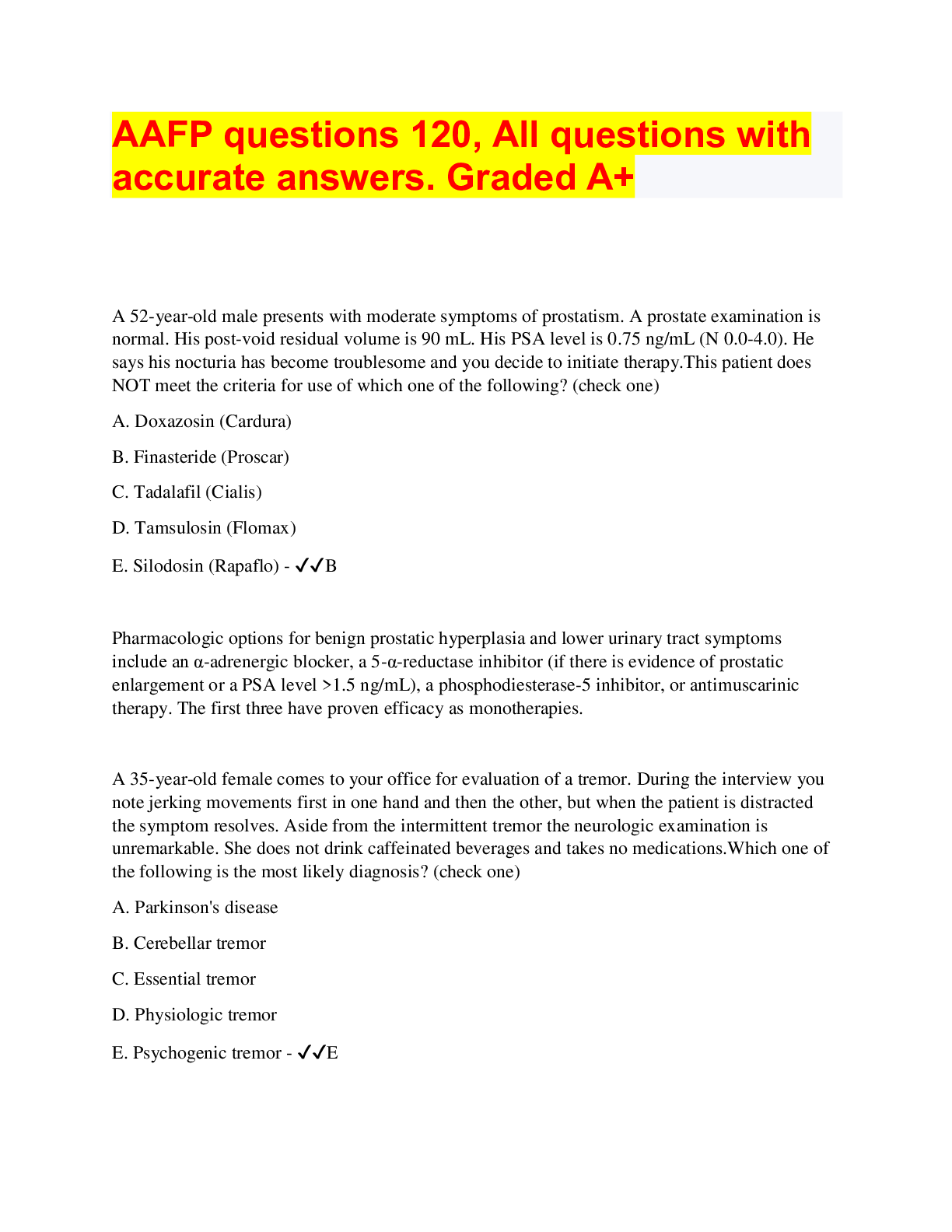
Buy this document to get the full access instantly
Instant Download Access after purchase
Add to cartInstant download
We Accept:

Also available in bundle (1)

ALL AAFP BUNDLE. LATEST VERSIONS, 2022
RATED A+ MASTERPIECES. ALL AAFPA EXAM DOCUMENTS
By bundleHub Solution guider 1 year ago
$35
10
Reviews( 0 )
$10.00
Document information
Connected school, study & course
About the document
Uploaded On
Aug 18, 2022
Number of pages
9
Written in
Additional information
This document has been written for:
Uploaded
Aug 18, 2022
Downloads
0
Views
88













